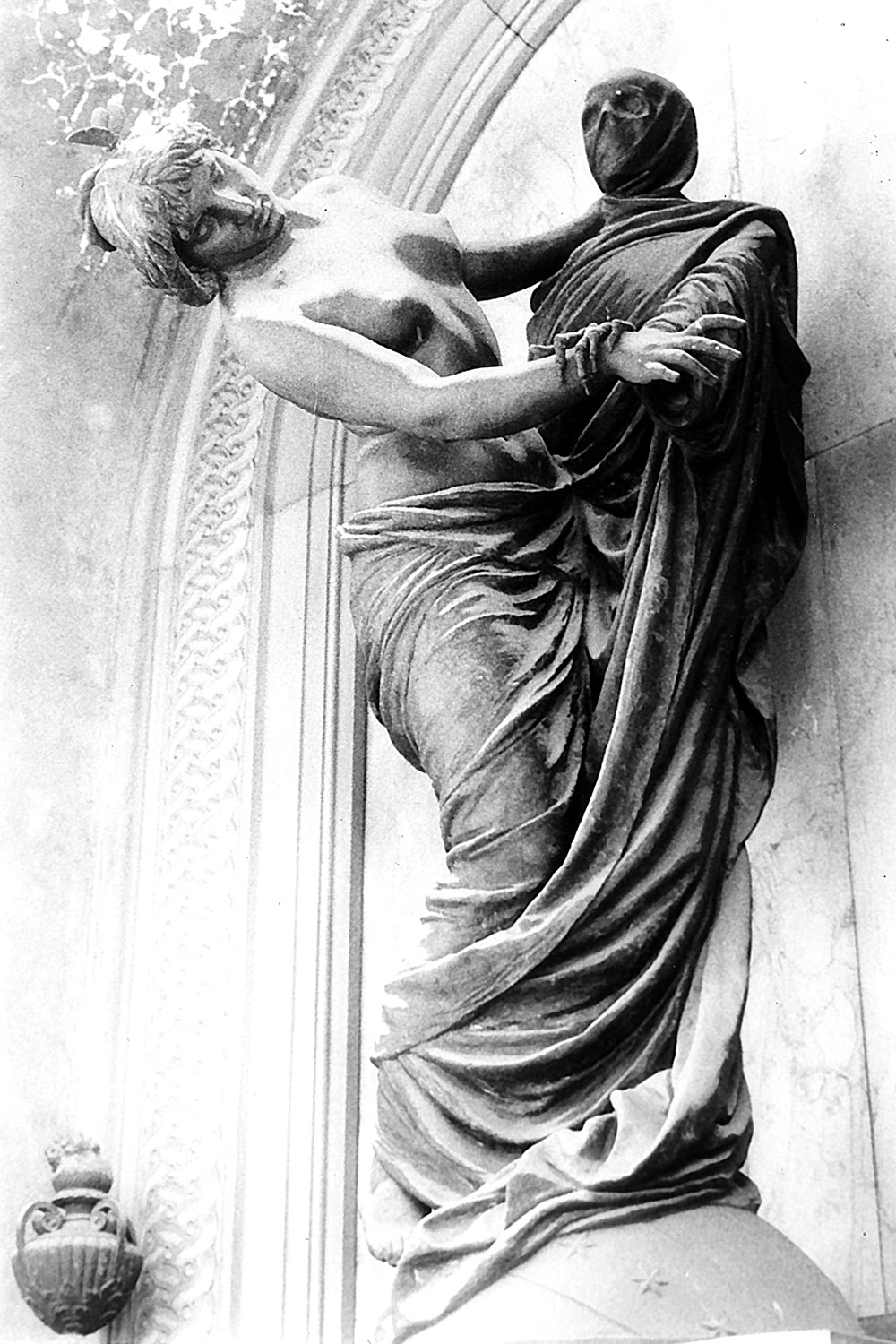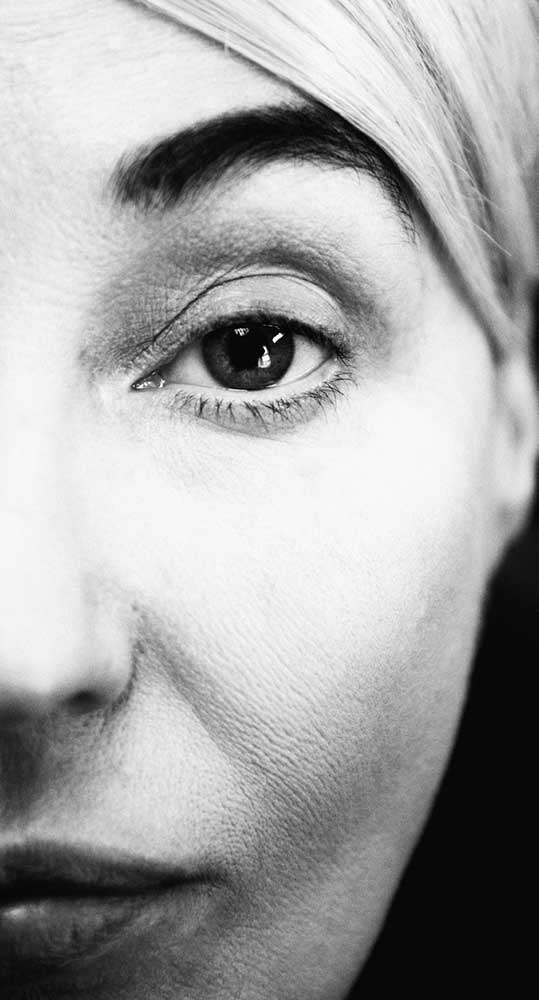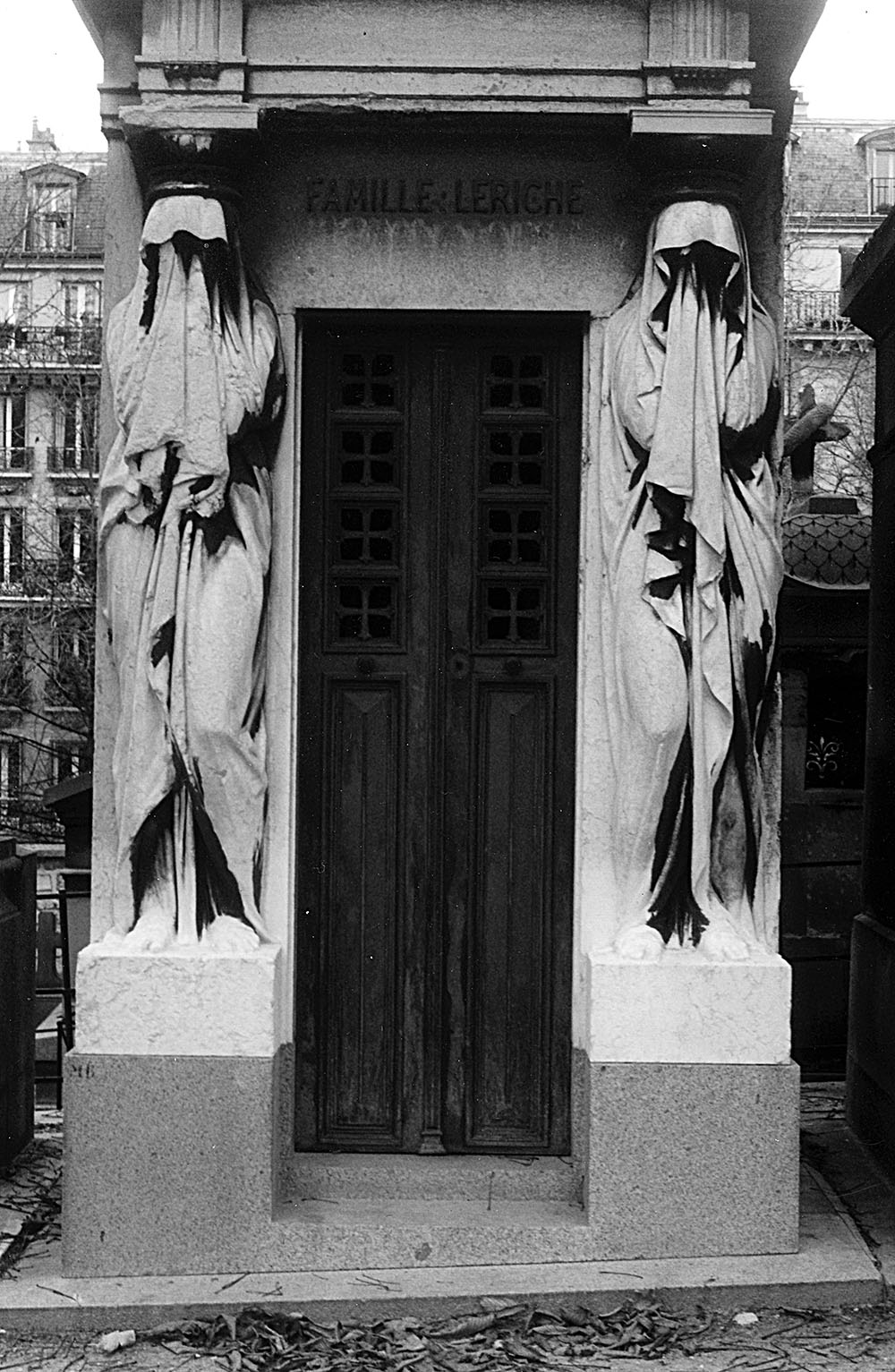Dead Can Dance
2020-04-01
by Niklas Göransson
Legendary Australian-British duo Dead Can Dance serve as living testimony of how all great art is built upon suffering and hardship. This is a tale of early beginnings, narrated by Lisa Gerrard.
The following is an excerpt from the full article, which is twice as long and published in Bardo Methodology #6. The same issue also includes conversations with FUNERAL MIST, DEATHSPELL OMEGA, SUNN O))), MYSTICUM, ADORIOR, Metalion, Dave Haley, OFDRYKKJA, Michael Denner, NECROS CHRISTOS, TEITANBLOOD, and Wim Hof.

– It wasn’t until “Into the Labyrinth” in 1993 we actually had something hit the charts – one of Brendan’s pieces, “The Ubiquitous Mr. Lovegrove”. Then “Host of the Seraphim” was used in a film called Baraka and ended up on National Geographic. It was those two pieces that let people know we existed. We had finally started earning money by this stage, we were not broke when we did “Into the Labyrinth”. We’d been doing a lot of little concerts around Europe. In a van.
By 1993, Brendan Perry was living in a refurbished old stone church in Cavan County, Ireland, whereas Lisa had moved back to Australia. However, until the late 80s their place of residence was a tiny apartment in the Isle of Dogs, a poor area in what at the time was the industrial heartland of London. As far as scenic inspiration goes, the residence boasted a grand panoramic view over the steel and concrete surroundings framing the heavily polluted Thames River. Hell-bent on making it as musicians, they lived for many years on the barest minimum; any money earned from band activities was invested in expanding their sonic arsenal with new instruments and gear. A majority of the 1988 “The Serpent’s Egg”, album number four, was recorded in their flat using equipment they’d amassed over the years. I read an interview from the year before, 1987, in which Lisa mentioned that – besides the fact they now had three records out – little had changed during the five years they’d lived in London. She lamented not even being able to hold regular rehearsals with their live ensemble due to the costs associated with renting a practice studio.
– I often look back and think, ’How ever did we stay alive without any money?’ I don’t know how we actually survived, it’s quite bizarre. If somebody said to me today, ‘There, you have no money; off you go, survive!’, I wouldn’t be able to do it. We did though, like a miracle of youth when you’re able to get by on nothing. Everything we’d learned and been taught was stripped away from us because we were living in the worst… no, not the worst. I mean, there was some beauty in the situation… but imagine when you were a child and went camping in the forest. It’s hard because you have to put up the tent and it’s cold or it’s hot and you must make a fire and cook something to eat. It’s not comfortable but, in some way, you’re in a natural environment and it’s sweet and you love it and come away altered in a beautiful way because you understand nature. But when you, as a child, go to somewhere like London and live in one of the lowest income areas that’s just concrete and completely devoid of nature – it’s like living in a cave-like culture, like a termite in the termite hill, in a termite mound, with a whole lot of ants and the stench of human beings with no money. You know, neglected children, the smell of urine, freezing cold, and… essentially the worst kind of aesthetic environment.
By necessity of survival, hard circumstances breed hard folk; the Isle of Dogs natives had been moulded accordingly. Lisa and Brendan, on the other hand, were artistic outsiders and – by their own admission – not especially hard at all. The locals picked up on this, resulting in several unpleasant confrontations. So, in the interest of self-preservation, they stayed indoors and applied themselves wholeheartedly to their music. Since they had virtually no money, the duo spent much of their time rummaging through the bookshelves and music archives at local libraries, an activity which would come to radically reshape DEAD CAN DANCE. The primary formula of their early soundscape was employing standard rock instrumentation in an unusual fashion. However, after studying so much classical music theory, Baroque structures in particular, they began losing interest in contemporary forms of music. The result can be heard on their 1987 album, “Within the Realm of a Dying Sun”, which contains an array of instruments such as cello, violin, trumpet, trombone, oboe, and so forth. The duo never stopped learning, delving further into Gregorian chanting, medieval European music, as well as a variety of ethnic tonalities; investing all available time into bringing themselves closer to their goals.
– Yes, we did. You obviously know this already but I can tell you again. We went to the library, because there was a fantastic library not far from where we lived. Limehouse Library. We didn’t have any money but were able to go there and borrow books and records. Maybe the situation helped push us into doing nothing but work and learn, because that’s all we could do. I was the same even before meeting Brendan, I was constantly working on my music.
1979, Melbourne, Australia – a mutual acquaintance introduces the seventeen-year-old Lisa Gerrard to Brendan Perry. At this point, Lisa sang in a band called JUNK LOGIC and was already a multi-year veteran of performing in various unsavoury local pubs. They remained friends and, a year and a half later, Lisa joined Brendan’s band DEAD CAN DANCE. Not as a singer, believe it or not, but as percussionist – Brendan initially thought her voice was ‘too freeform experimental’ for him to work with. Sensing Europe to have a greater market for their music, they brought along bass player Paul Erikson and relocated to London in 1982.
– Going to that place, I don’t really understand any of it. I obviously know I went there and that we worked extremely hard for people to hear our music, but I’m not really sure why. Looking back now, I think, ’Why did we do that? Why didn’t we just stay at home in Australia with our mothers and fathers and have a nice time? Get a job nursing or go back to school. What was this terrible urgency to go to this horrible place and remain there in the worst possible circumstances?’ It was because we believed in something; we believed in this poetry that was in our hearts. Why? I have no idea why. It’s almost like the anxiety of perpetual creation but you don’t get to stop. The one thing I’m eternally grateful for is that my children are not artists. I’m so glad. They’re not at all like me, this lunatic running around thinking she’s going to change the world because of her art. Because it’s so painful and disappointing. But I’m being far too intimate now, I shouldn’t speak about these things because I’m very honest. Anyway, what else do you need to know about things? What do you want to know?

DEAD CAN DANCE’s self-titled debut album was recorded in Blackwing Studios and then released by 4AD in March 1984. Over their seven albums and twelve-year collaboration, DEAD CAN DANCE – along with COCTEAU TWINS, CLAN OF XYMOX, THIS MORTAL COIL, and so on – played a crucial role in shaping the legacy and sound of this now-classic label. “Into the Labyrinth” even became 4AD’s highest-ever selling record. One detail I was unable to find out though, is how they ended up there in the first place.
– After arriving in London we bought ourselves bicycles and then rode around with these little tape-cassette things Brendan had made. It contained two pieces we’d written together, so we went with our little cassettes to all the different independent record companies and dropped them off and not a single one of them responded. One year afterwards, we received a letter from Ivo Watts-Russell (4AD) saying, ‘I can’t stop thinking about this music. Can you come see me?’ So we rode our bicycles and he asked if we could do a concert – we accepted, found Peter Ulrich, rehearsed, and then performed as support for XMAL DEUTSCHLAND. Afterwards, Ivo offered us a record deal.
One piece of trivia my research did uncover was that DEAD CAN DANCE were not exactly overwhelmed by the financial compensation they received from their label.
– There are so many similar stories with bands signing deals with record companies. We’re like a very small version of THE BEATLES in some ways, seeing as how they sold our work to different publishing companies so we don’t actually own any of our early records. As it turns out, these amazingly beautiful, kind, independent companies that were only there to support the artist are even worse than the worst kinds of major labels because you end up owning nothing. We get some royalties, that’s it. The only reason we’ve been able to continue is because we managed to do things far away from these people.
As of their 2012 comeback record – “Anastasis”, the first studio album since “Spiritchaser” in 1996 – DEAD CAN DANCE have been working with Belgian label PIAS Recordings.
– The horrible thing is how they then run around acting as if they’re some sort of music gurus. Independent labels and all this… do you know the worst thing about these people? When doing my master classes I often work with young singers who want to get into the music business and I always tell them, ‘Never trust a person who isn’t in a black suit with a black tie and a white shirt. It’s the ones looking like you – who you think you can trust – that you cannot trust. They’re the people who’ll rob you blind.’ If somebody turns up in a suit and a white shirt and a black tie you think, ‘Oh, businessman. I can’t trust this guy.’ Forget it. It’s the ones who come waving contracts looking like hippies, those are the guys you can’t trust because they’ll get you believing they’re going to do the right thing by you. And they are the worst kind. In the old days, I thought Martin Mills was just a total corporate record company person and all that but, out of everyone we worked with, he’s the only one who was totally honest about the fact that he was only there to make money. Looking back now, I think Martin was the only person who was sincere because he didn’t lie. He didn’t pretend.
Martin Mills was Watts-Russell’s business partner in 4AD until 1994, when the latter suffered a nervous breakdown and sold his share to the former. Mills would later go on to form British record label Beggars Group, under which umbrella 4AD was later included.
– Being really honest with you, in the early days I didn’t respect Martin. I thought, ‘Oh, he’s totally corporate, he doesn’t care.’ I respect him now. You know why? Because he never pretended not to be corporate like the others did. The others pretended to be our friends. They pretended to be like us. ‘Oh, we’re one of you. We’re just poor kids, you know.’ And then they took the rights to our music and sold it off to huge record companies like Universal. Arseholes, complete and utter arseholes. I’ve told them straight out that they’re the worst kind of people. But what can you do?
What did they have to say in their defence?
– They said, ’You should have been more responsible for what you were doing.’ We were children. And we trusted them when they pretended to be something they weren’t; bullshit artists like you can’t even imagine. Going around, like, ‘Oh yeah, we were there helping out all the artists.’ Get real, these people robbed us. But I don’t care. We don’t care. Who cares? I’d rather be the person who gets robbed than the person doing the robbing. You know, a lot of young kids say to me now, ‘How do we get into the entertainment industry? How do we get in?’ I just tell them to play music on the street corner and never get involved in the first place. If you really love what you’re doing, play it on the street. Stay out of the music business because you’ll just get ripped off, robbed, humiliated, and destroyed. There’s no point.

This was an excerpt from the full article, which is twice as long and published in Bardo Methodology #6. The same issue also includes conversations with FUNERAL MIST, DEATHSPELL OMEGA, SUNN O))), MYSTICUM, ADORIOR, Metalion, Dave Haley, OFDRYKKJA, Michael Denner, NECROS CHRISTOS, TEITANBLOOD, and Wim Hof.



